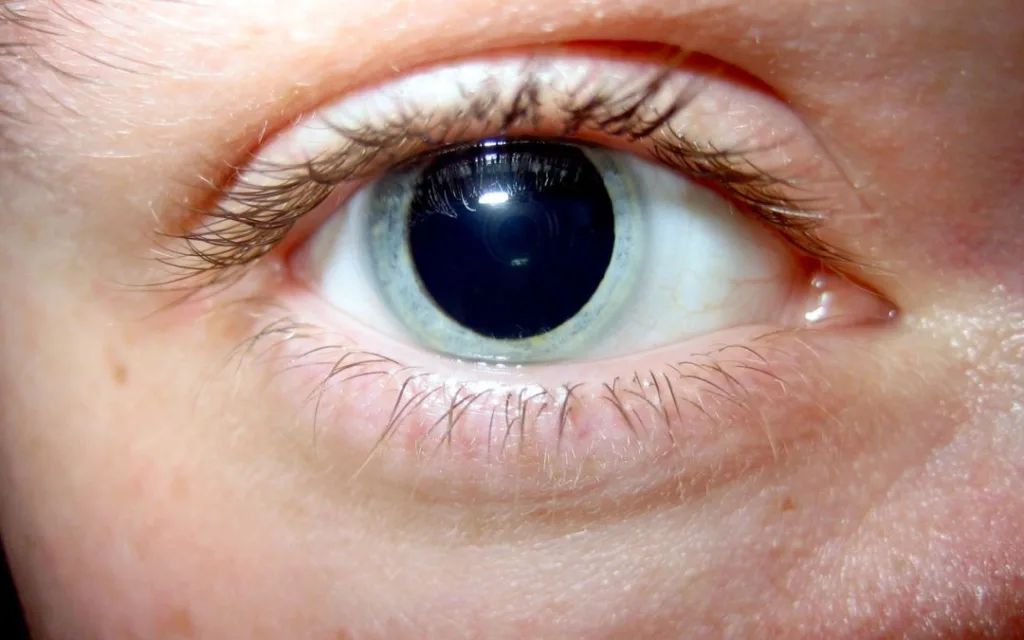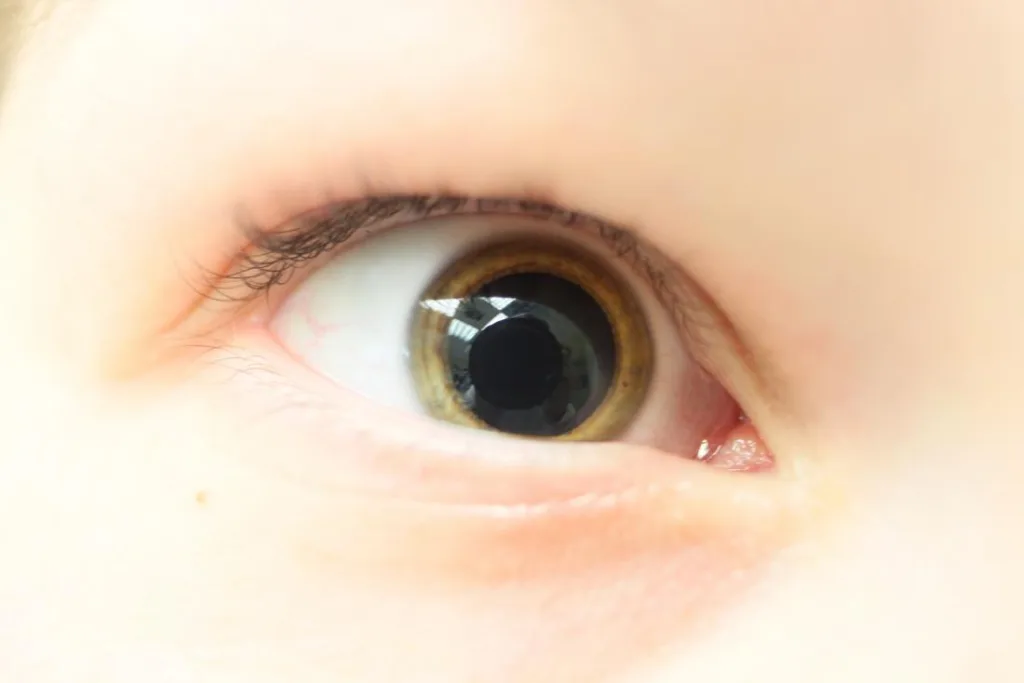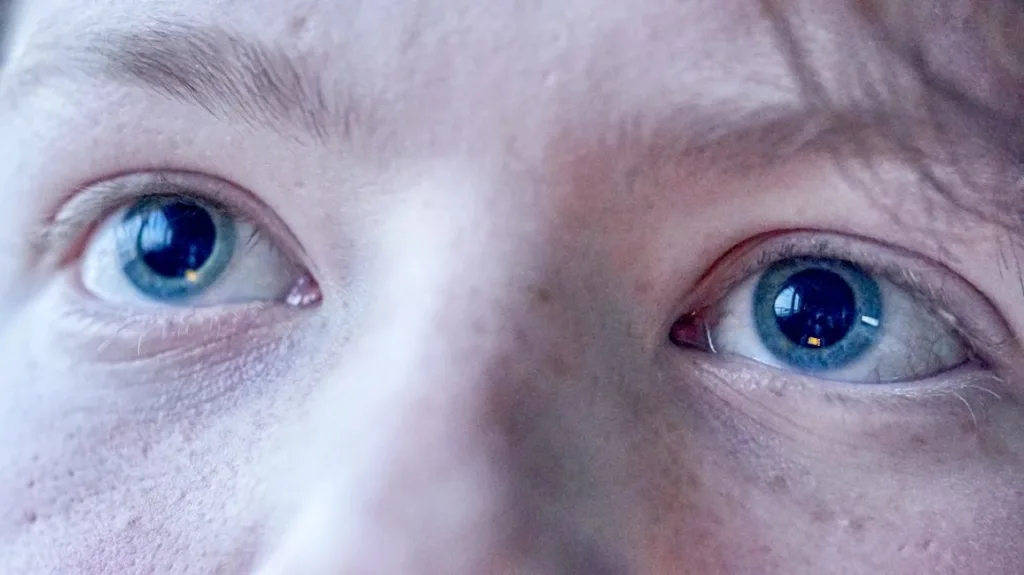Concussions are becoming increasingly common in sports, esecially in high-contact sports like football and hockey. Concussions are a type of traumatic brain injury that occurs when the brain is jolted or shaken inside the skull. Concussions can cause a range of symptoms, including headaches, dizziness, confusion, and loss of consciousness. One symptom that is often overlooked is the dilation of the pupils.
Pupils are the black circles in the center of the eye that control the amount of light that enters the eye. Normally, the pupils are of equal size and react to light in the same way. However, after a concussion, the pupils may become dilated or enlarged, which can be a sign of brain injury.
Dilated pupils are a result of increased intracranial pressure (ICP), which is a condition that occurs when there is too much pressure inside the skull. ICP can be caused by swelling or bleeding in the brain, which can occur after a concussion.
One simple way to assess whether a patient has dilated pupils is to shine a low-beam flashlight from the outer edge of each eye inward. The pupils should quickly get smaller (constrict) in response to the light. A slow pupil response to light may be a sign of brain injury and should be evaluated by a medical professional.
In addition to assessing whether a patient has severe traumatic brain injury, recent research finds that the pupillary light reflex can be useful in detecting milder concussions. This is important because milder concussions can often go unnoticed and untreated, which can lead to long-term brain damage.
The pupillary light reflex test is non-invasive, quick, and easy to perform, making it an excellent tool for screening athletes who may have suffered a concussion. If a concussion is suspected, it is essential to seek medical attention immediately. A medical professional can perform a thorough evaluation and provide appropriate treatment to prevent further damage to the brain.
Dilated pupils can be a sign of brain injury and should not be overlooked after a concussion. The pupillary light reflex test is a simple and effective tool for assessing whether a patient has suffered a concussion, and can be used to detect milder concussions that may have gone unnoticed. If you or someone you know has suffered a concussion, seek medical attention immediately. Early detection and treatment can prevent further damage and ensure a full recovery.
Effects of Concussion on Pupil Dilation
Pupils can dilate (become larger than normal) with a concussion. In fact, changes in pupil size and reactivity are common neurological signs that doctors look for when assessing a patient with a head injury. Dilated pupils can indicate an increase in intracranial pressure (pressure inside the skull), which can be a serious complication of a concussion. It’s important to seek medical attention if you experience any symptoms of a head injury, including changes in vision, headache, or loss of consciousness.

Signs and Symptoms of a Concussion in the Eyes
If someone has a concussion, their eyes may appear differet than usual. One possible sign of a concussion is unequal pupil size, which is called anisocoria. This means that one pupil may be larger or smaller than the other. In addition, the pupils may not react normally to light, meaning that they may not constrict or get smaller in response to a bright light. This can be a sign of increased intracranial pressure (ICP), which is a serious complication of a concussion. Other possible changes in the eyes that may be seen with a concussion include eye tracking difficulties, blurry vision, or sensitivity to light. If you or someone you know experiences any of these symptoms after a head injury, it is important to seek medical attention immediately.
Signs of a Concussion: Uneven Pupil Size
When someone experiences a concussion, it is posible for their pupils to become different sizes. This condition is called anisocoria. Anisocoria is caused by damage to the part of the brain that controls the size of the pupil. This damage can occur when the brain is jolted or shaken inside the skull, causing the brain to hit against the bony skull.
The brain controls the size of the pupils by sending signals to the muscles in the iris, which is the colored part of the eye. When the brain is injured, these signals may become disrupted or slowed down, leading to an unequal pupil size. The size of the pupils can also be affected by the amount of light that enters the eye. In normal circumstances, the pupils should be the same size in both eyes, but with anisocoria, one pupil will appear larger or smaller than the other.
It is important to note that anisocoria can also be caused by other conditions such as migraines, tumors, or certain medications. Therefore, if you notice that your pupils are different sizes after a concussion, it is important to seek medical attention to rule out any other underlying conditions.
Checking Pupils After Head Injury
Doctors check the pupils of a patient after a head injury because it can provide valuable information about the severity of the injury and any potential damage to the brain. The pupillary light reflex is a normal response where the pupil of the eye constricts in response to a bright light, and it is controlled by the autonomic nervous system. If there is damage to the brain from a head injury, this reflex may be affected, causing the pupils to become unequal in size, dilated, or unresponsive to light. This can indicate serious brain injury, such as bleeding or swelling, and prompt medical intervention may be necessary. Additionally, recent research has found that checking the pupils for milder concussions can be useful in detecting early signs of brain injury, wich can help with early intervention and treatment. checking the pupils after a head injury is a crucial part of assessing the patient’s condition and ensuring appropriate medical care.
Significance of Dilated Pupils
Dilated pupils, or mydriasis, can indicate a variety of conditions. It is a normal response to changes in light, but it can also be a sign of an underlying medical issue. For example, certain drugs or medications can cause pupil dilation, including cocaine, amphetamines, and some prescription medications. Additionally, eye injuries, glaucoma, or inflammation of the eye can also cause dilated pupils. In more severe cases, mydriasis can be a symptom of a serius medical condition such as a stroke, brain injury, or tumor. If you experience persistent pupil dilation, accompanied by symptoms such as headache, dizziness, or confusion, it is important to seek medical attention promptly to rule out any serious underlying conditions.

When Do Concussion Symptoms Begin After a Head Injury?
Concussion symptoms can start immediatey after hitting the head or they may not become apparent for several hours or even days. The timing of symptom onset can vary depending on the individual and the severity of the injury. It is important to note that not all head injuries result in a concussion, but if a concussion does occur, symptoms may include headache, dizziness, nausea, vomiting, confusion, memory loss, sensitivity to light or noise, and difficulty concentrating. In most cases, symptoms of a mild concussion or TBI will improve within a couple of weeks, but it is important to seek medical attention if symptoms persist or worsen over time.
The Finger Test for Detecting Concussion
The finger test for a concussion is a common diagnostic tool used by medical professionals to assess the patient’s eye movements. During this test, the doctor will ask the patient to follow their finger as it moves around in different directions. The patient’s eyes will be closely observed to determine if they can smoothly track the finger’s movement. If the patient is unable to follow the finger or their eye movements are jerky, it may indicate a concussion. However, it’s important to note that this test is not the only way to diagnose a concussion and should be used in conjunction with oher diagnostic tools, such as imaging tests or neurological exams.
Symptoms of a Slow Brain Bleed
A slow brain bleed, also kown as a chronic subdural hematoma, can cause a range of symptoms. These symptoms may start off mild and gradually worsen over time. Common symptoms of a slow brain bleed include confusion, difficulty concentrating, headaches that persist or worsen, nausea and vomiting, changes in mood or behavior, seizures, weakness or numbness on one side of the body, and difficulty speaking or slurred speech. Additionally, unequal pupil size, loss of movement on one side of the body, and changes in vision may also occur. If you experience any of these symptoms, it is important to seek medical attention immediately.
Identifying the Severity of a Head Injury
Head injuries can range from mild to severe, and it is important to be able to identify the severity of the injury. A mild head injury may present with a raised, swollen area from a bump or bruise, and the person may experience a headache, dizziness, or nausea. They may also feel a bit dazed or confused but will generally remain conscious and able to communicate.
On the other hand, a severe head injury requires immediate medical attention. Symptoms may include loss of consciousness, a severe headache that does not go away, repeated nausea, and vomiting. The person may have difficulty speaking or moving, and they may experience seizures, slurred speech, or numbness in thir extremities.
It is important to note that even mild head injuries should be monitored closely, as symptoms may worsen over time. If you suspect a head injury, it is always better to err on the side of caution and seek medical attention. A healthcare provider will be able to evaluate the severity of the injury and recommend appropriate treatment.

Symptoms of Delayed Concussion
Delayed concussion symptoms can occur days, weeks, or even months after the initial head injury. Common symptoms include persistent headaches, dizziness, fatigue, irritability, anxiety, trouble falling asleep or sleeping too much, loss of concentration and memory, and ringing in the ears. Other symptoms may include heightened sensitivity to light and noise, blurred vision, nausea, and vomiting. It is important to note that delayed concussion symptoms may appear mild at first but can worsen over time. If you or someone you know is experiencing any of these symptoms after a head injury, it is important to seek medical attention immediately.
The Dangers of Sleeping With a Concussion
It is not necessarily harmful to sleep after a concussion, but there are risks associaed with it. The main danger of sleeping after a concussion is that some serious brain damage symptoms might go unnoticed. For instance, if you experience a seizure or weakness on one side of your body, your family or doctors may not be aware of it while you are sleeping. Therefore, it is important to have someone monitor you while you sleep to ensure that any symptoms are detected and treated promptly. Additionally, sleeping for an extended period after a concussion can worsen some symptoms, such as headaches, dizziness, and nausea. It is crucial to follow your doctor’s advice and rest as needed, but also to stay alert and seek medical attention if any concerning symptoms arise.
Effects of Trauma on Dilated Pupils
Traumatic mydriasis is a condition that can cause dilated pupils. This condition occurs when there is damage to the sphincter pupillae muscle, which is responsible for controlling pupil size. The damage can be caused by trauma such as a blow to the head, a car accident, or a sports injury. In some cases, there may also be tears in the iris, leading to an irregular pupil shape. The degree of anisocoria, or difference in pupil size, can vary depending on the extent of the muscle damage. Typically, a bright light can make the difference in pupil size more apparent. It is important to seek medical attention if you experience any trauma to the head or eyes that may result in dilated pupils, as it can be a sign of a more serius underlying condition.
The Impact of Light on Pupils After a Concussion
Pupils do react to light after a concussion. However, the way in which they react can be different from how they wold normally react. This is because a concussion can affect the way the brain processes information from the eyes, which can then have an impact on the pupil’s response to light. In some cases, the pupil may be slower to constrict or dilate in response to changes in light, or it may not respond as strongly as it normally would. As a result, observing changes in pupil size and reactivity can be an important tool for diagnosing and monitoring concussions, and may serve as a biomarker for the condition.

Effects of Brain Bleeding on Pupil Dilation
A brain bleed can cause dilated pupils. When there is bleeding in the brain, it can lead to increased pressure inside the skull, which can put pressure on the nerves that control the pupils. This pressure can cause the pupils to become dilated, which means they appear larger than normal. Dilated pupils can also indicate other serious medical conditions, so if you or someone you know is experiencing this symptom along with other signs of a brain bleed, it is important to seek medical attention immediately.
Conclusion
Dilated pupils can be a sign of a concussion, particularly when accompanied by other symptoms such as loss of consciousness, headache, or vision disturbances. The pupillary light reflex test is a simple and effective way to assess whether a patient has experienced a brain injury, and recent research suggests it can also be useful in detecting milder concussions. Therefore, it is crucial for healthcare professionals to be aware of these symptoms and to perform the appropriate assessments to accurately diagnose and treat patients with concussions. Early intervention and proper management can help prevent long-term complications and promote optimal recovery.
